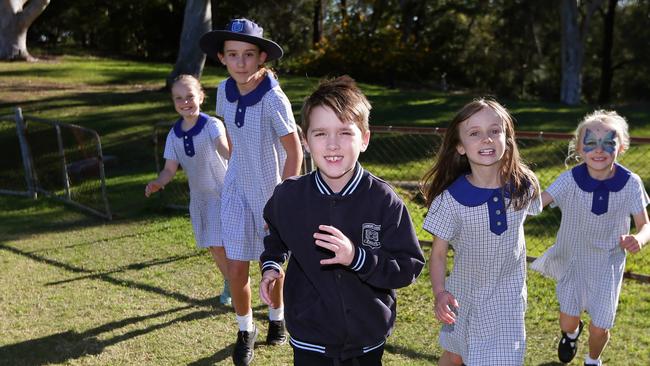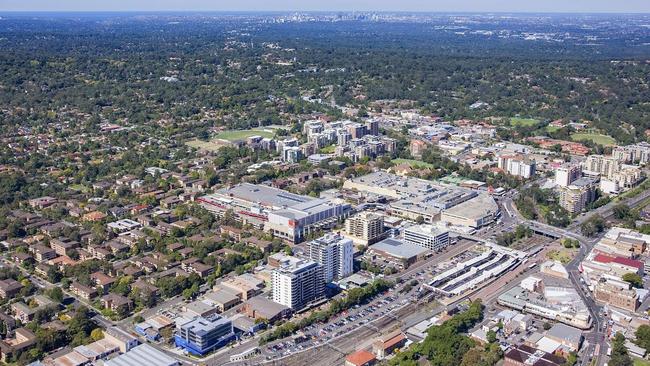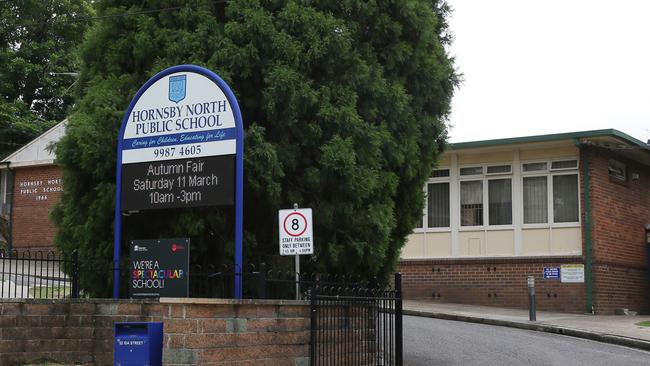Parents rally for new co-educational high school in Hornsby but State Government says no plan for new schools
PARENTS are calling for a new co-educational high school in the Hornsby Shire but the State Government says it has no plans to change the status quo.
PARENTS are calling for a new co-educational high school in the Hornsby Shire but the State Government says it has no plans to change the status quo.
The call comes as the Audit Office of NSW revealed that schools in the north district were ranked first and second for primary and secondary schools respectively across Sydney when it came to operating at or over capacity.
Local parent Alexi Boyd urged the State Government to be “proactive” about the need for a co-ed school.
“The State Government needs to consult our community and see what our needs are,” Ms Boyd said.
“Our four government high schools in the Hornsby Shire are on the verge of becoming over capacity.
“Our government is failing the future generations by not being proactive about the development of new schools.”

Ms Boyd said despite her children being in primary school she was concerned about where she would send them for secondary education. “Two of our four government high schools are also selective, which unfortunately will see some children prevented from attending these schools,” she said.
“Co-educational learning should always be a community’s first choice.
“Private schools such as Barker College have realised the positive implications of coeducational learning. Why has the government not caught on?
Berowra resident Amanda McMahon said infrastructure needed to match growth across the region.
“Co-educational learning is real life learning,” Ms McMahon said.
“We understand that Hornsby is developing and growing, but we need proactive infrastructure to go along with this. Schools are bursting at the seams.”

Premier Gladys Berejiklian spoke exclusively with the Advocate about parents’ demands and said she would take it on board.
“I think people would agree we have great quality in public education,’’ Ms Berejiklian said.
“If people want a mix of co-ed and single-sex schools I’ll take that on board.
“It should be a horses for courses model. I want there to be sufficient choice for parents so I’m open to considering that option.’’
Hornsby state Liberal MP Matt Kean quashed claims that residents north of Asquith would no longer be eligible for enrolment at Asquith boys or girls schools.
“All parents who live north of Hornsby wishing to enrol their kids in Asquith Boys or Asquith Girls can continue to do so,” he said.
“Parents in our community should know that our local public high schools are among the best in the country. There are six exceptional co-educational high schools serving our community who have capacity to take on new enrolments now and well into the future.”
Public high schools in the region include Asquith Boys and Asquith Girls. Normanhurst Boys and Hornsby Girls are both selective. Turramurra High, Ku-ring-gai High, Cherrybrook Tech and Pennant Hills High are all co-ed.
CRAMMED STUDENTS FEEL THE SQUEEZE
UPPER north shore schools are in the spotlight this week after the Audit Office of NSW revealed that 75 per cent of primary schools in the north district are operating at or over capacity.
At the same time, 29 per cent of the district’s secondary schools have also reached capacity.
NSW Auditor General Margaret Crawford’s report to the State Government found the student population in NSW Government and non-government schools was projected to grow by 21 per cent to nearly 1.5 million students over the next 15 years.
“For much of the last decade, there has been chronic under-investment in NSW Government school infrastructure and deficiencies in asset planning,” Ms Crawford said in the report.

“The condition of classrooms has been declining due to insufficient maintenance and many are not configured to support contemporary and desired future learning and teaching.”
Premier Gladys Berejiklian said the State Government was “building more schools than ever”.
“This week I was able to announce additional funding which will see more than 2000 schools get maintenance upgrades so it’s not just about building new schools, but also making sure the school environment is a positive one,” she said.



